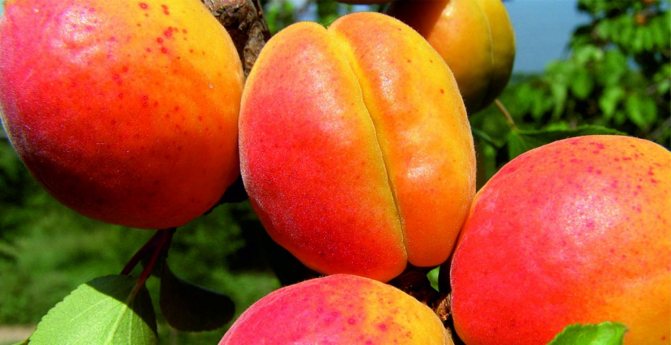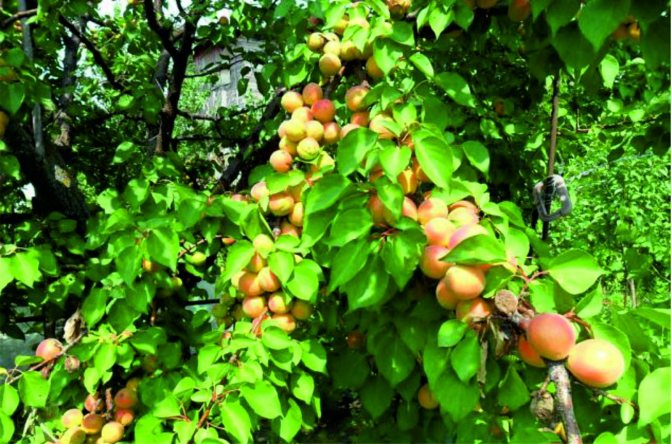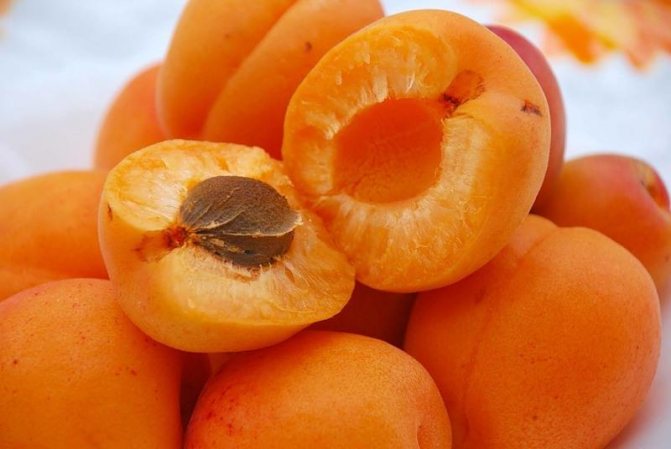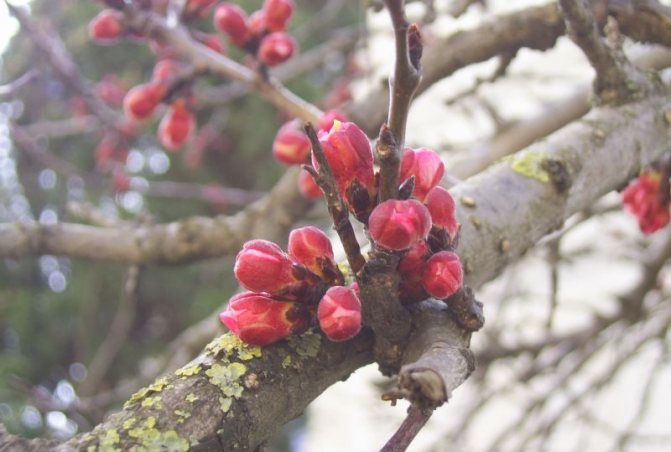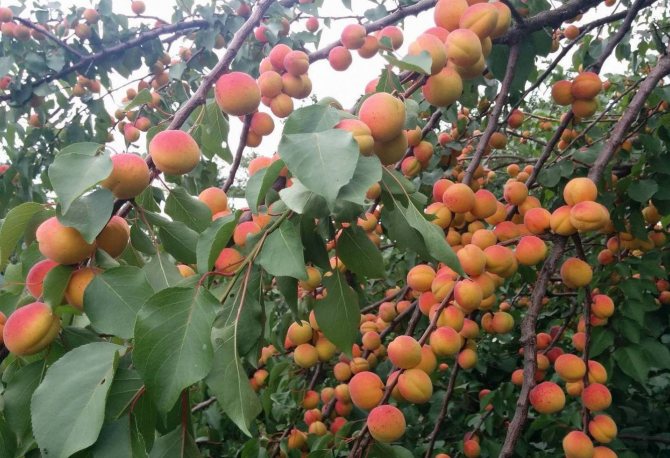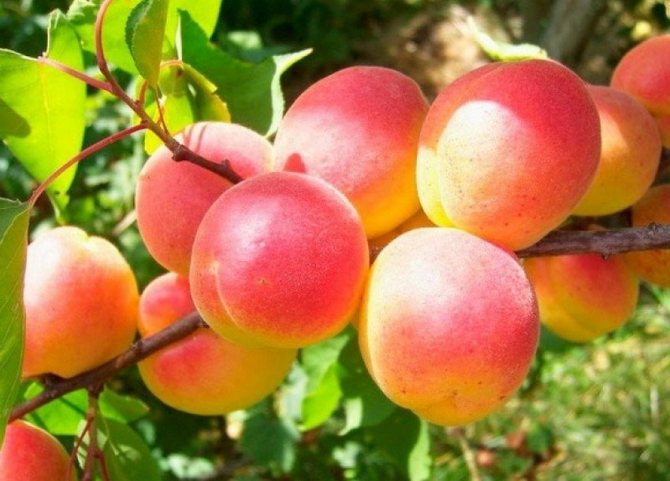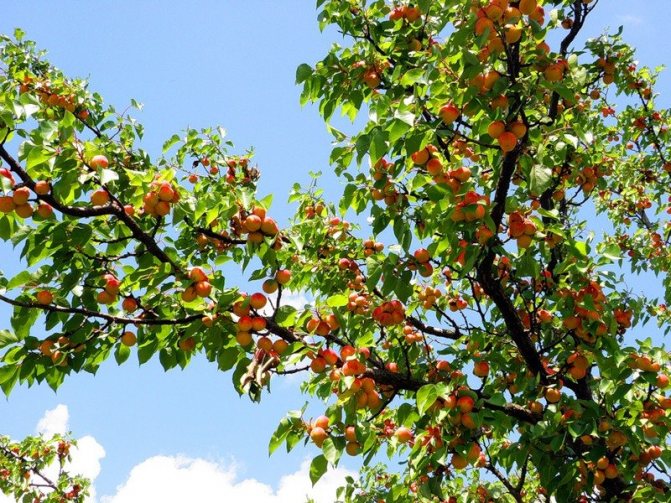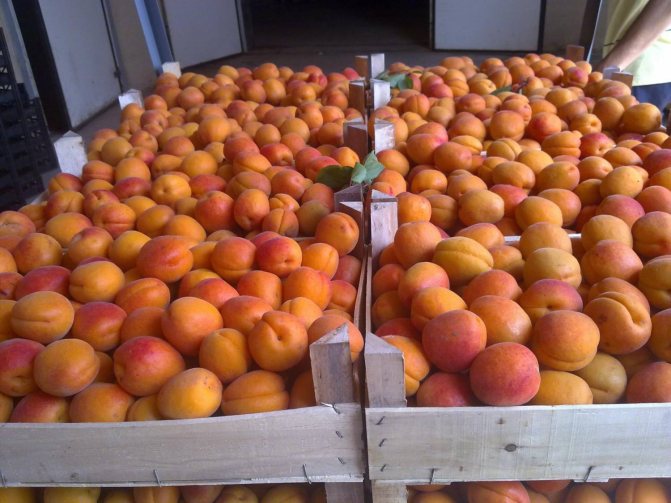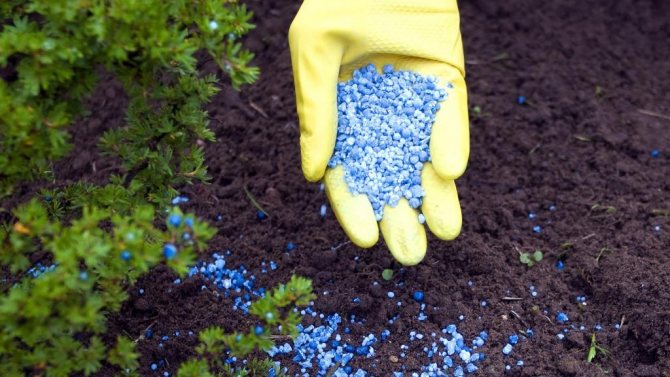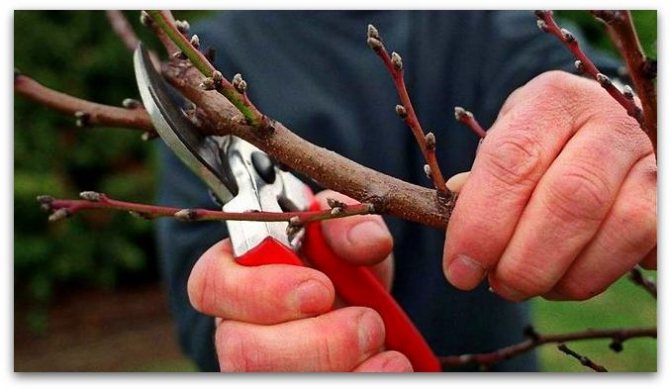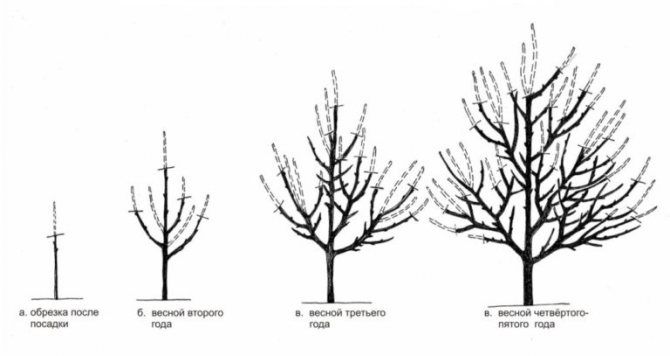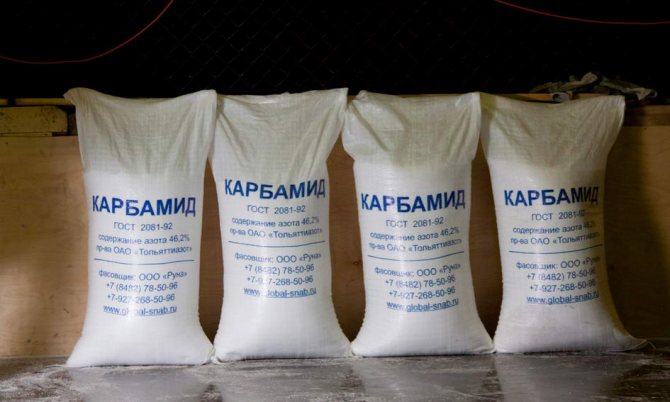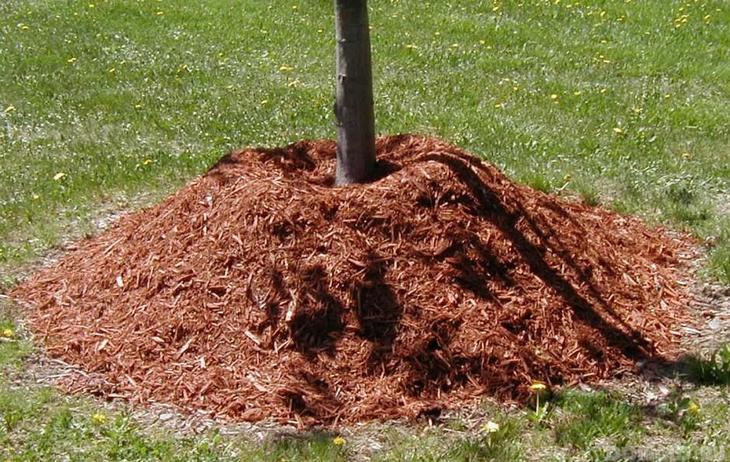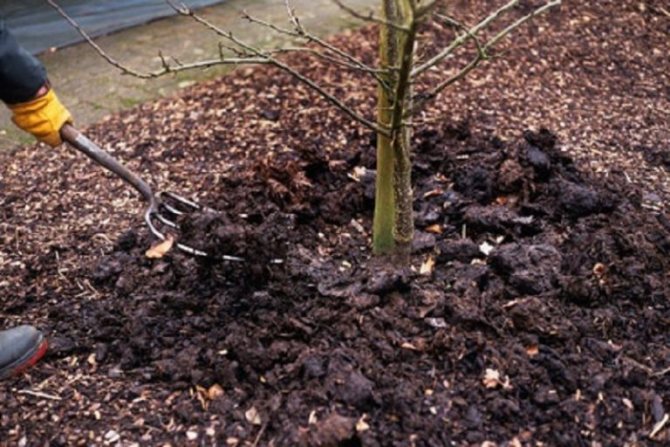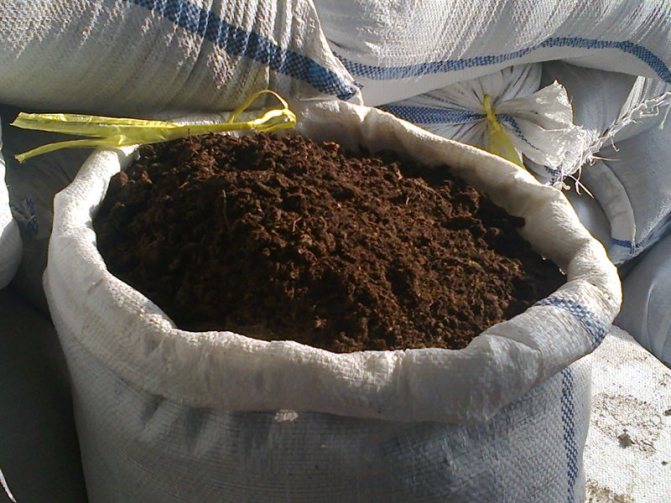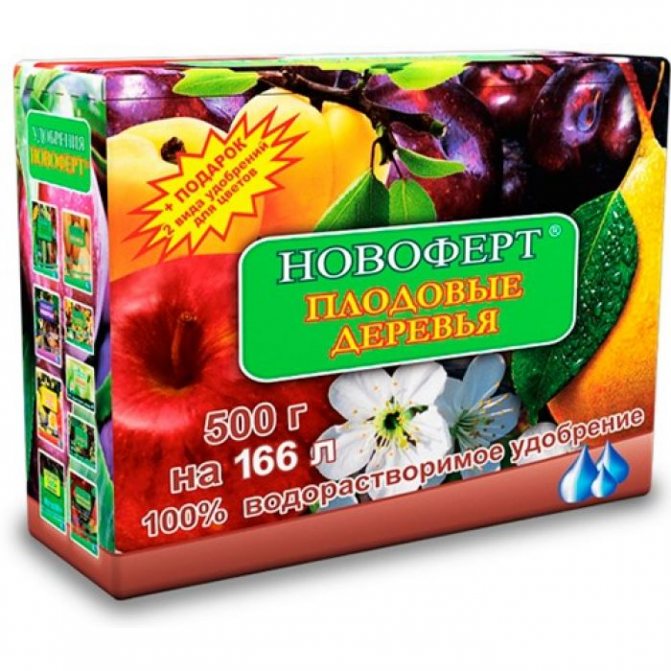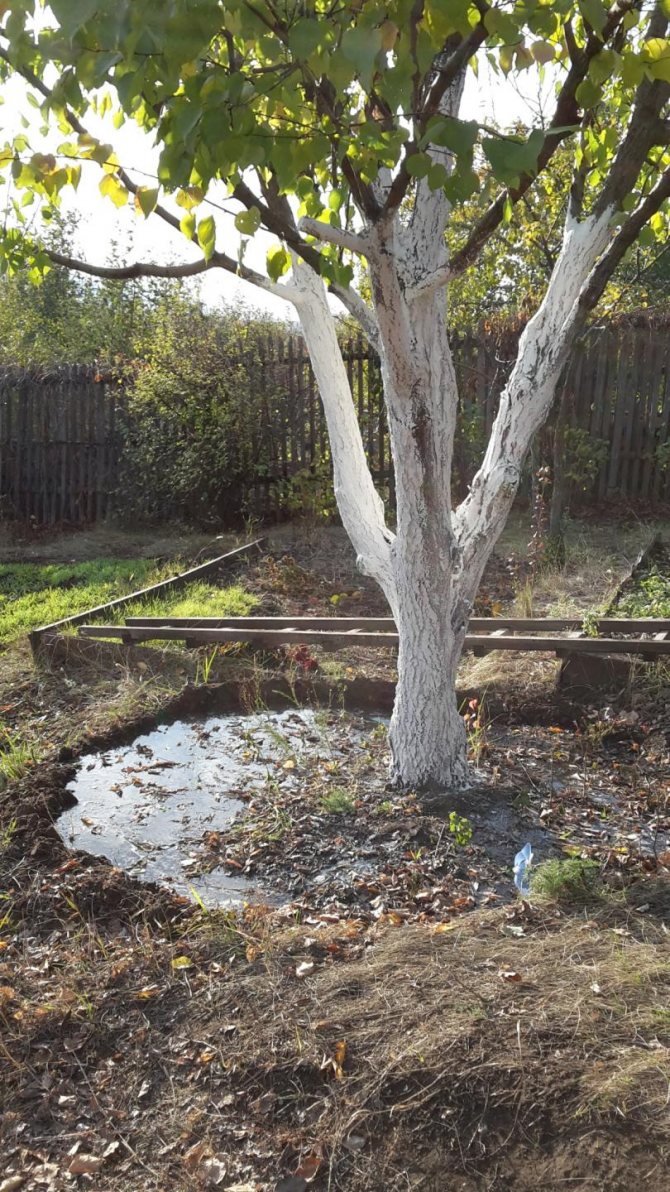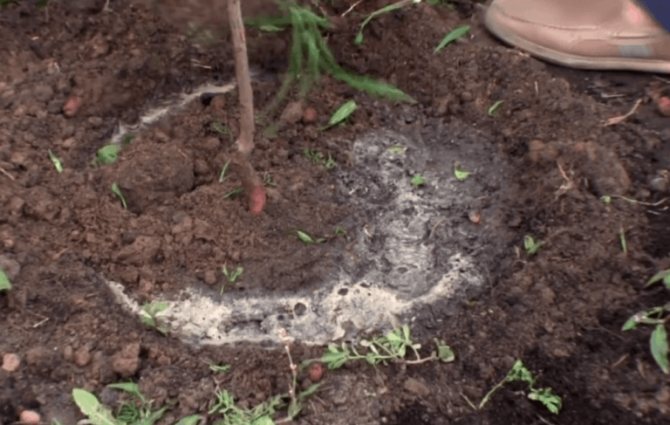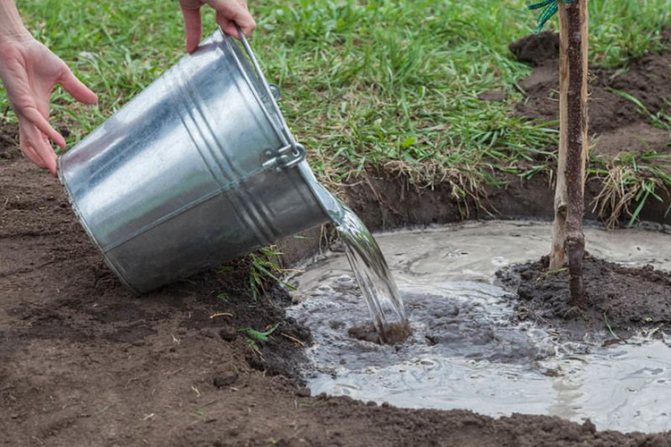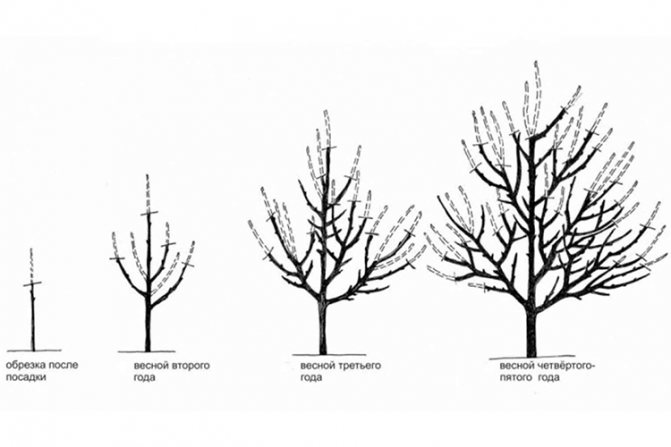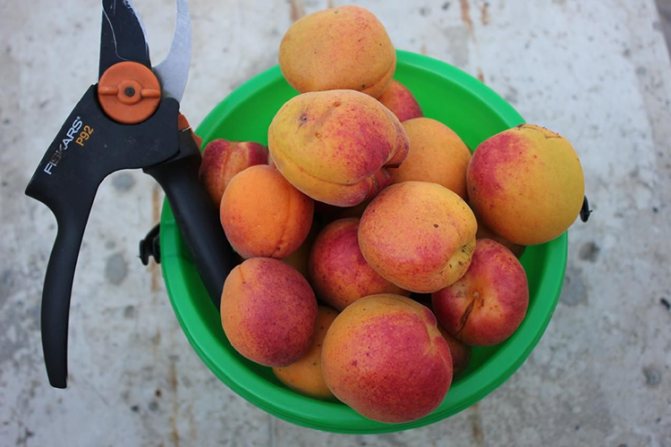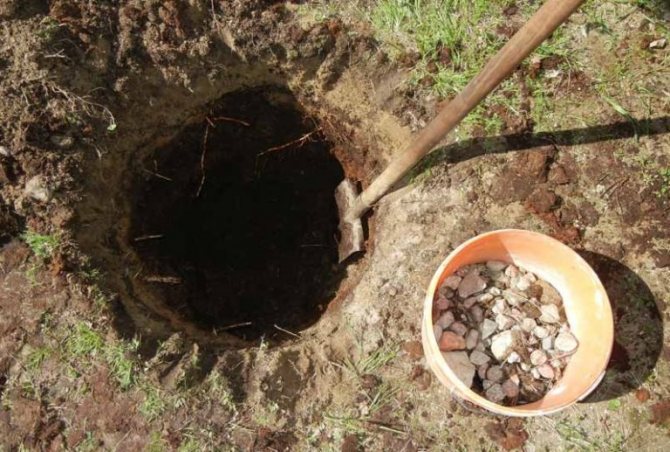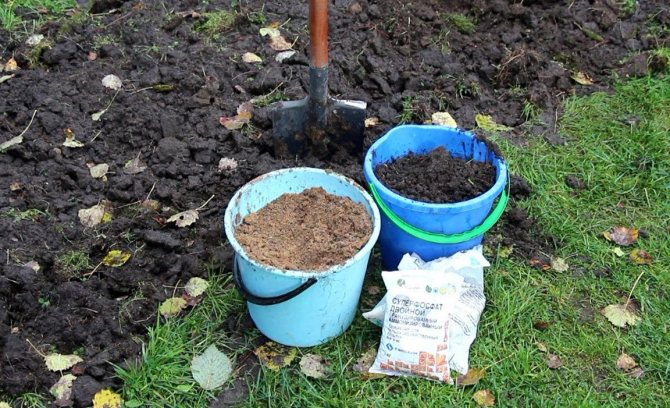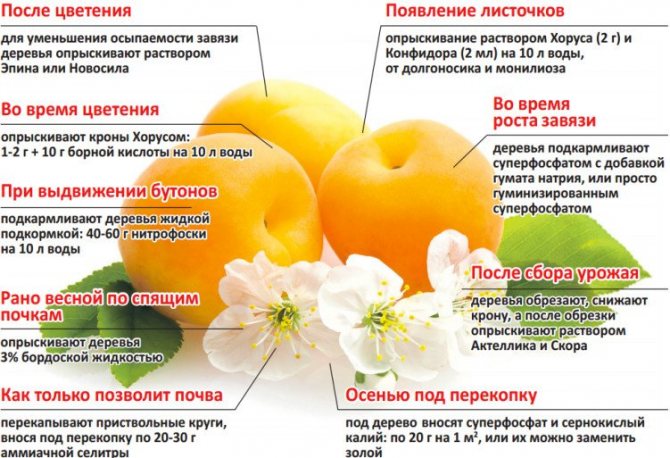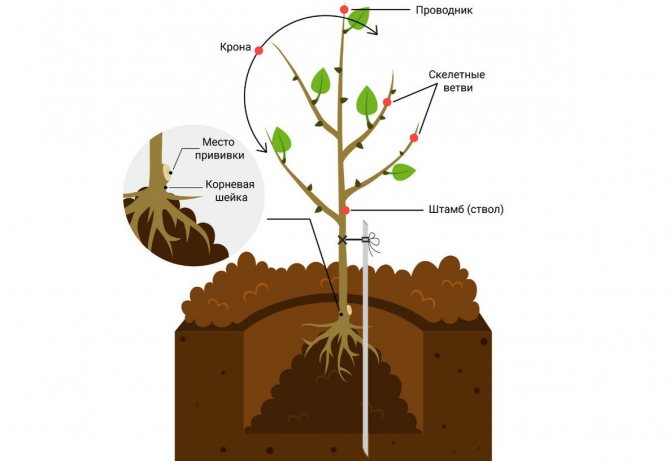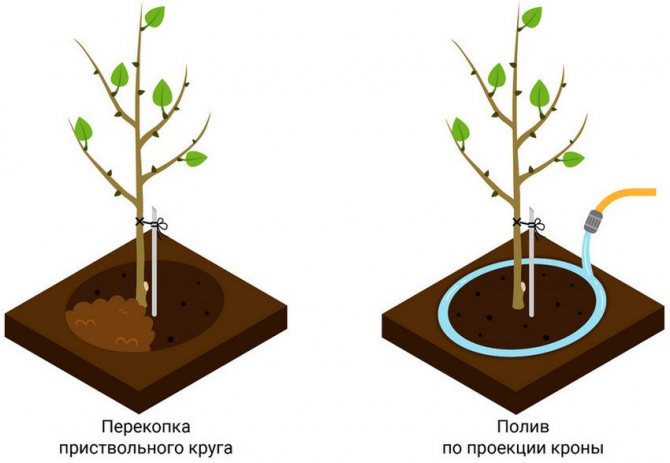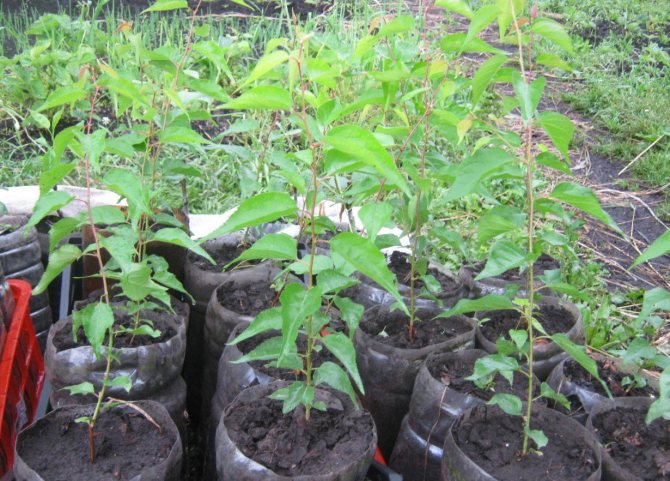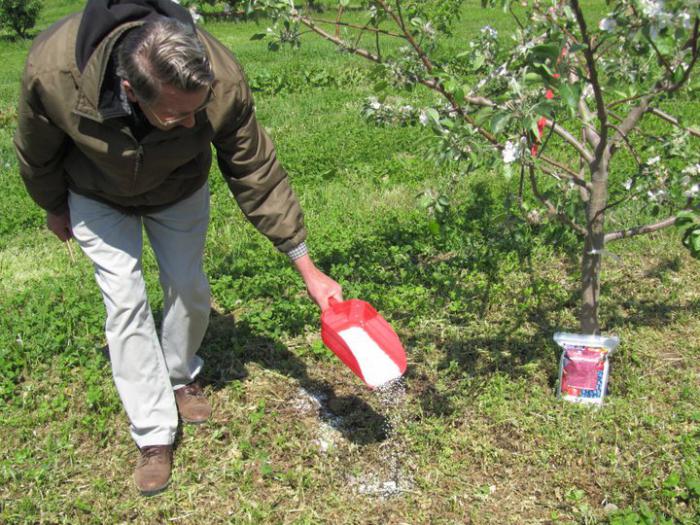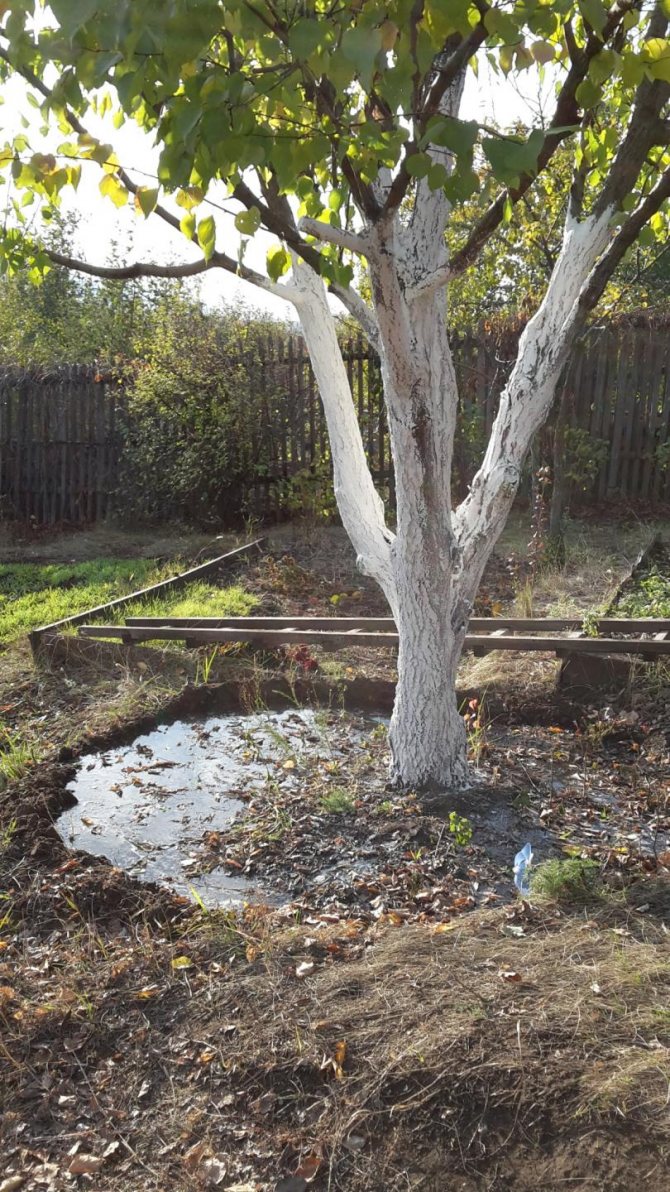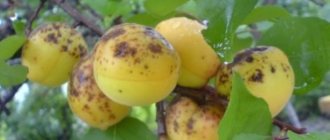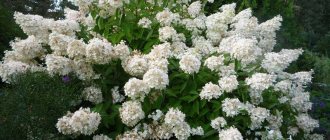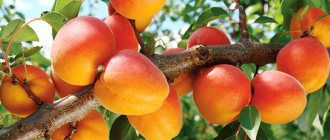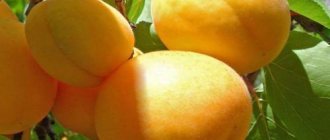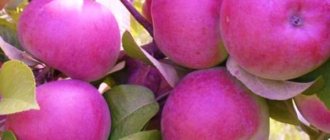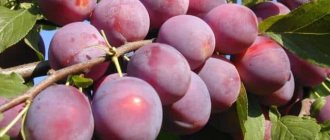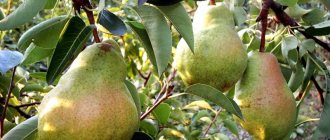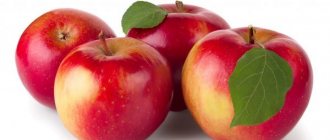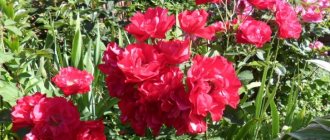Description of the variety
The fruit tree is a tall and vigorous fruit crop with a lush crown and sweeping branches. In height, representatives of this variety sometimes reach 10 meters, but usually their growth stops at a five-meter mark.
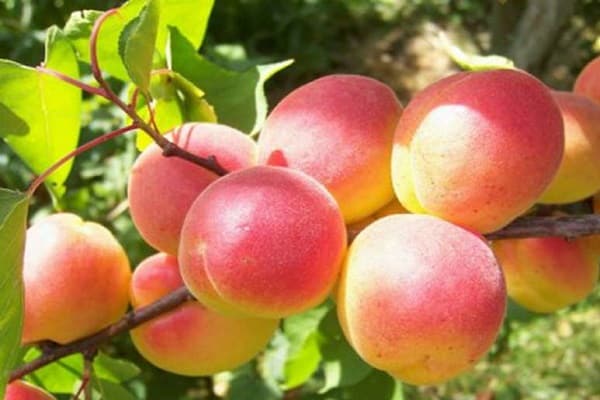
Important! A properly formed crown facilitates not only the process of caring for the tree itself, but also in the future, the way of harvesting.
In the description of the variety, small fruits are indicated by a rounded or ovoid shape with a deep seam on the abdomen. The orange-yellow hue of the fruit with a red barrel is a characteristic feature of this apricot, not for nothing called Red-cheeked.
The sweet and juicy flesh of the fruit has a barely noticeable sourness and a slightly orange color. The rough stone has a sweet nucleolus inside and is easily separated from the pulp of the fruit itself. The tree, in principle, is a long-liver, the lifespan of which varies between 50-60 years.
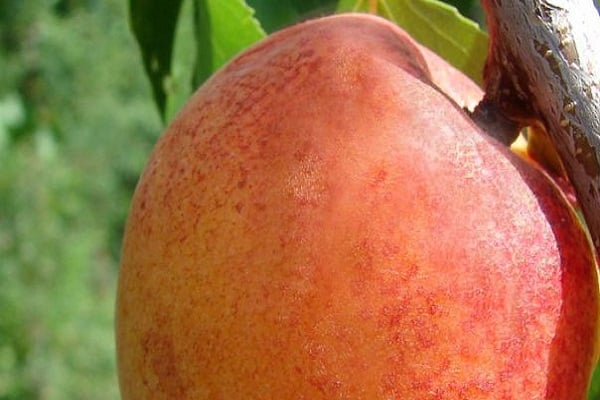

Produced by breeders of the Crimean district in 1947, it was subsequently taken as a basis for the recreation of more perfect apricot hybrids. The son of Krasnoshchekiy, thanks to his winter hardiness, began to be planted in the Central zone of Russia, over time, expanding the growing territory.
In addition, the described apricot, the brother of the late Krasnoshcheky, Nikitsky, Saligirsky, received, in contrast to the others, a longer life span, ranging from 60 to 75 years.
Apricot care
The volume of the grown crop depends on the correct care for a fruiting apricot tree.
Watering
After planting the seedling, you need to regularly water the young tree every 3-4 days during the first growing season. For one watering, it is necessary to spend at least 30 liters. one tree. From the second season, the fruit tree should be watered before and after flowering with a volume of 30-40 liters. one tree.
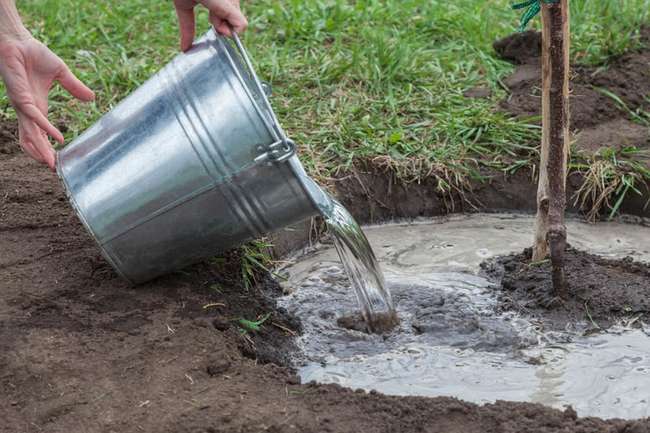

During the summer, when shoots are formed, water the apricot 40-50 liters. water. After harvesting is complete, the soil inside the trunk circle of 50-60 liters should be moistened. water. The last watering is moisture-charging and has a positive effect on the overwintering of the tree.
Fertilization
The gardener should pay attention to how to feed the apricot in the spring. At this time, it is necessary to provide the fruit tree with a sufficient amount of nitrogen. Therefore, you need to use a solution of ammonium nitrate (20-23 g per 10 liters of water) in a volume of 6-7 liters. under one tree.
Top dressing of apricots in the summer should be carried out using a solution of chicken manure - 1 liter. 12-13 liters. water. Consumption rate - 8-9 liters. per plant.
It is very important to know how to feed the apricot after harvest. Fertilize the apricot with liquid mullein (1:12) before going into winter. Consumption of working solution - 7-8 liters per tree.
How to properly prune an apricot
We figured out the fertilizer, now about when to cut the apricot in spring or autumn. According to existing recommendations, pruning is carried out in three stages. In early spring, before the start of sap flow, dry and heavily frozen branches and shoots are cut off. Parts of the crown that are incorrectly formed or strongly thickened are removed. In summer, parts of the crown that are severely affected by diseases or pests should be removed.
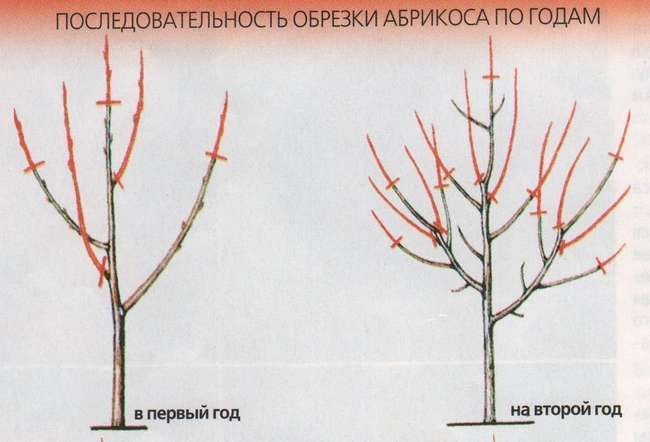

In late autumn, branches and shoots damaged by diseases and pests are removed.In addition, young shoots, strongly developed or growing inward, are cut out.
Preparing for winter
After harvesting, the period of preparation of the Son of the Red-cheeked for winter begins. During this period, it is necessary to carry out water charging and pruning. If necessary, spray the apricot crown with chemicals to kill diseases or pests. To additionally insulate the tree, wrap the trunk with roofing felt, and cover the trunk circle with agrofibre or a piece of roofing material.
Breeding history
There is little information about the original homeland of the Red-cheeked miracle and its initial origin. Although for the first time these fruit trees found themselves in the highlands of Central Asia.
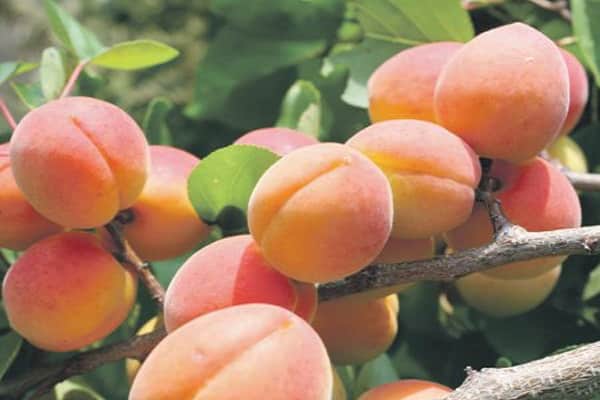

Later, this apricot variety began to be bred in the territories of Armenia. Well, in the post-war period, breeders of the Nikitsky agrobotanical garden in Crimea gave this variety a new life.
Today, the competitiveness of this variety among its European relatives is a fait accompli. Therefore, an unassuming type of apricot, thanks to selective selection, feels comfortable regardless of the territory of its growth.
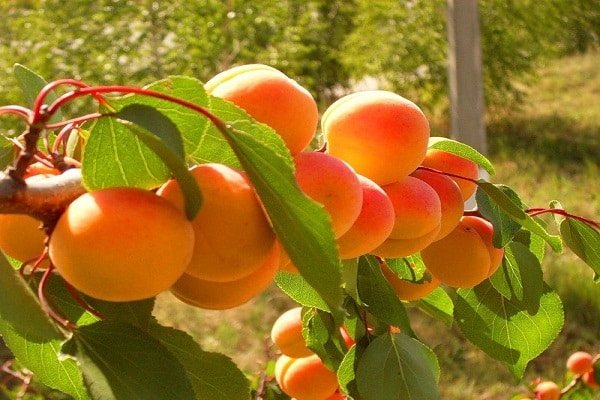

Disease Resistant Apricot Varieties
Disease resistance plays a large role in crop production. Healthy trees bear fruit well, so many gardeners prefer popular varieties with high disease resistance:
Apricot Royal
A very vigorous tree, which gives it special advantages over other plants. An adult tree is resistant to early frost, tolerates temperature differences well. In addition to winter hardiness, the plant rarely gets sick. It can be sprayed less often. The flowers are preserved, they are not affected by diseases and pests.
- good color;
- average ripening period;
- dense fruits;
- sugar content 5+.


Apricot Kuibyshevsky Jubilee
It has an average ripening period. The crown of the tree is sparse with ankle branches. The shoots are thick enough. The fruits of the plant are of medium size, dense texture, orange in color with a blurred blush. The pulp is sour sweet, juicy. The tree is resistant to diseases such as ringpox, viral wilting, fungal infection and moniliosis.
- one-dimensional fruits weighing 35 g;
- self-fertile;
- medium ripening;
- yield 5+.
Apricot Compote
The dense skin allows the fruit to be used for preservation. It is considered marketable and can be transported without problems. Little is affected by the moth, rarely sick.
- middle ovoid bone;
- taste qualities 4+;
- yield 4+;
- resistance to temperature extremes.
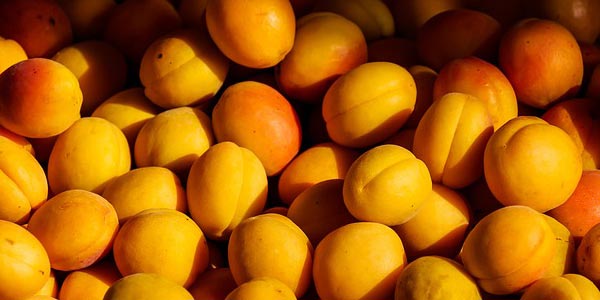

Dessert
Possesses winter hardiness, strong variety. Not susceptible to moniliosis and other common diseases of garden plants. It is self-fertile, suitable for home cultivation. It has thick wood, juicy dense fruits, lightish with a slight blush at the base.
- juicy fruits;
- small bone;
- winter hardiness 4+;
- yield 5+.


Countess
A culture that rarely suffers from moniliosis. The crown of the tree has very dense foliage. The horticultural crop bears fruit of medium size. They have soft juicy pulp with a uniform structure. The tree is unpretentious in cultivation and tolerates severe frosts.
- periodic yield;
- juiciness and taste 5+;
- transportability 4+;
- delicate pleasant taste.
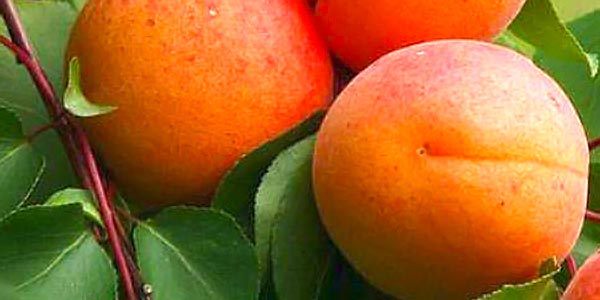

Star
Columnar variety with dense fruit structure. It can be grown easily in all parts of the country. Resistant to severe frost, drought and heat. The fruit is oblong and has a sour taste. The culture blooms in mid-spring, bears fruit of various shades. The tree is not whimsical to care for.
- yield 3+;
- unpretentious cultivation;
- dense pulp;
- low sugar content.
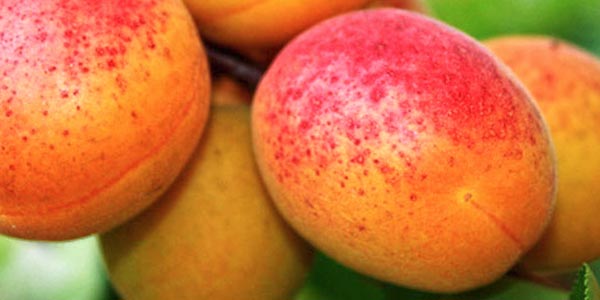

Lescore
The tree bears fruit with delicate pulp. Growing apricot Lescore does not need special conditions. This garden culture is unpretentious. It belongs to the Czech selection, therefore, the description of Czech varieties of apricots often includes information about this variety.
- strong growth;
- tender pulp;
- average transportability;
- small bone.
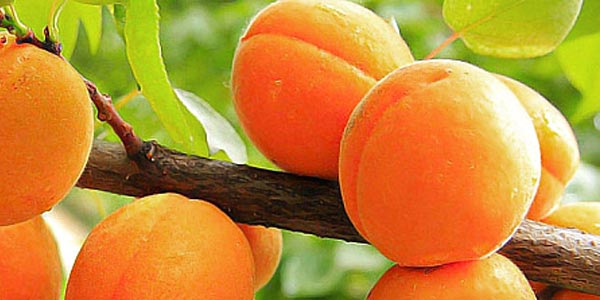

Before planting an apricot tree in your personal plot, you should study the types of apricots, understand the characteristics of the varieties. Understand which culture is exactly right for your region, so that the trees bear fruit and please with an excellent harvest.
Advantages and disadvantages
Among the many advantages of the described variety, the most positive aspects are distinguished in the form of:
- resistance to arid climates and low temperatures;
- self-fertility;
- immunity to certain diseases;
- yield;
- little exactingness to the soil;
- the highest taste in fruits.
Among the disadvantages of this culture, excessive sensitivity to sudden changes in temperature conditions is distinguished. The spring period, with alternating thaws and frosts, is the most dangerous for the life of this apricot variety. Temperature fluctuations adversely affect the buds of future flowers, which can die from such a negative effect.
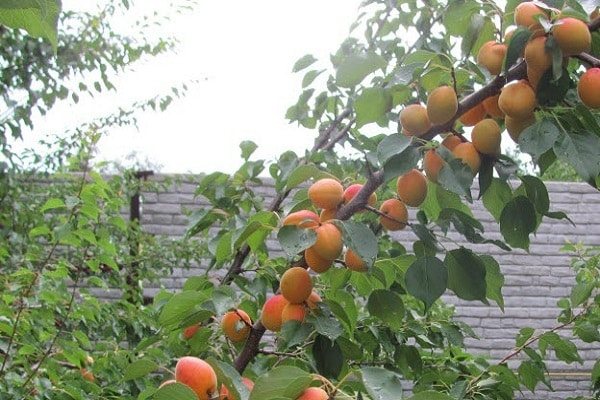

Regional features of cultivation
In the Moscow region, apricots are planted from the southern part of buildings, fences. Then the trees get more heat. For the winter they are covered according to the standard scheme. In the spring, trees are watered with nitrogen-containing agents. When the apricots are ripe, potassium is added, it improves their taste.
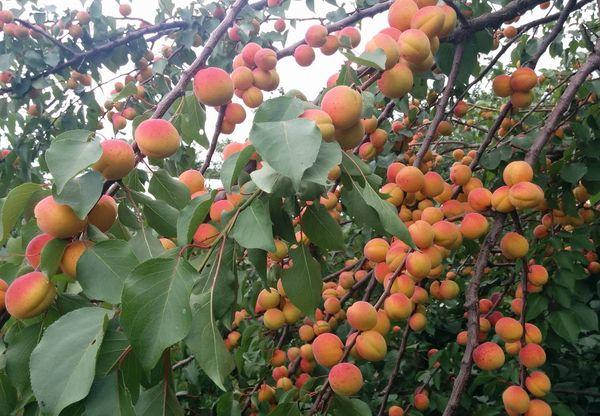

In the Urals, the taste of apricots differs from those that grew in the South. Prolonged cold weather, spring frosts, sharp cold snaps, and frequent precipitation prevail in the region. Trees must be carefully treated from fungi at intervals of 5-6 times per growing season.
The buds are fumigated with smoke from burning straw to keep them out of the cold. At the bottom of the pit, a drainage layer of crushed stone is arranged, since moisture from precipitation often remains in the circumferential trunk.
In mid-latitudes, it is important to choose the right seat, periodically apply top dressing, and cut off branches. The main problem is spring temperature drops, trees can freeze slightly. It is necessary to pay special attention to preparing for the winter period. The trunks are treated with lime and spud, the earth is mulched with humus.
Characteristics of trees and fruits
These fruit trees are characterized by a powerful crown, sweeping and strong branches. Apricot culture is resistant to strong winds, easily adapts to new conditions and tolerates low temperatures.
There are no special requirements for planting young seedlings. Trees have strong protection - thick bark, are accustomed to the abundance of sunlight, and therefore thrive in open areas.
Apricot Red-cheeked is a hardy variety, this is evidenced by the conditions of its growth in the "harsh Russian winter".
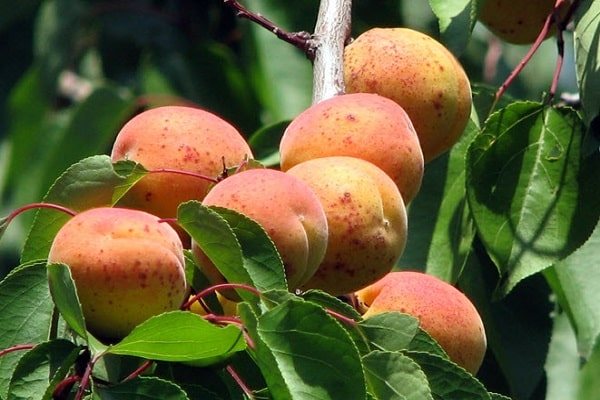

Poured, already ripe apricots have a golden-orange color. A characteristic feature of this variety is a red barrel, velvety fruit surface and excellent aroma when the fruit is broken.
See also
How to properly prune apricots in summer, spring and autumn and common mistakes gardeners makeRead
The period of fruit ripeness is at the end of July. Due to the inconstancy of the fruit ripening process itself, the harvest is carried out in stages, which prevents the possibility of sprinkling of the fruit.
The variety has excellent transportability and storage capacity for more than 10 days after harvest.
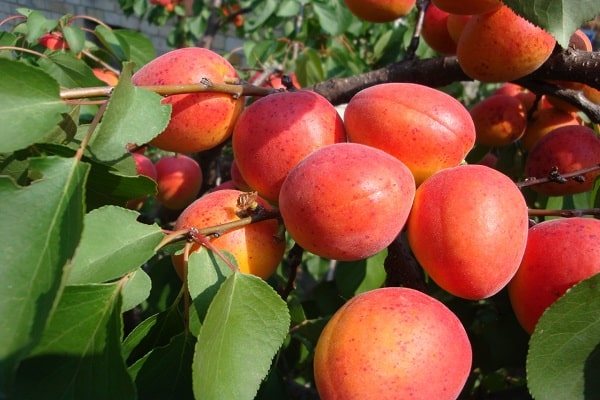

The best varieties for the Krasnodar Territory
If the apricot variety is early, then it is important to take into account the climatic features of the area. Under favorable conditions, the grafted seedling quickly enters the fruiting phase. Most varieties of apricots are self-pollinated. Popular for cultivation:
Harogem apricot variety
Mid-late culture of Canadian selection. The plant has large fruits with a fleshy fibrous pulp, bright orange in color with a rich, red blush. The fruits ripen at the end of July. Resistant to temperature extremes. Tolerates frost.
- fruit weight 70 g;
- not afraid of frost;
- yield 4+;
- suitable for all regions.
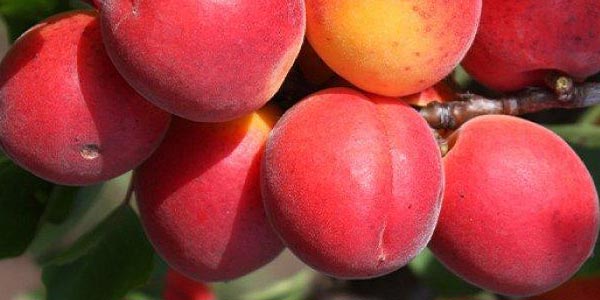

Apricot Kherson
The frost-resistant crop is popular for backyard cultivation. Popular with gardeners for its pleasant taste. The fruit has a firm skin and delicate pulp, medium weight and characteristic aroma. Suitable for the preparation of winter preparations and fresh consumption. Easily transported in small boxes.
- yield 5+;
- disease resistance;
- average percentage of sugar content;
- pleasant taste.
Apricot Surprise
The culture is obtained from an elite seedling. Breeders crossed the apricot seedling with the sample Amber. The crown of the tree is slightly spreading. The fruit is heavy and ripens at the end of July. The color is orange-red with crimson on the side. The skin is dense, pubescent, velvety.
- yield 5+;
- cold resistance;
- sweet and sour taste.
Productivity and storage
The yield of apricot of this varietal accessory directly depends on how the seedlings were taken care of, from the planting stage to the very fruiting. If all the rules and recommendations were taken into account, then in the end the amateur gardener will be rewarded with a luxurious apricot orchard and a high yield.
The volume of fruits already harvested can also be increased by phasing out the fruits. After all, then the unripe apricots remaining on the tree will be poured and enlarged in volume. This will also solve the problem of the safety of the crop - the fruits will stay on the tree for the allotted time, waiting in the wings.
From what needs in the future apricots will be used, and their collection will be carried out with different stages of fruit ripening. To obtain dried fruits, it is more advisable to use overripe fruits, for food - ripe ones, without any defects. For transportation over many kilometers, it is better to pick up fruits of a slightly yellow color. Any fruits are suitable for saving for the winter, a real hostess will be able to use them to the advantage of the cause.
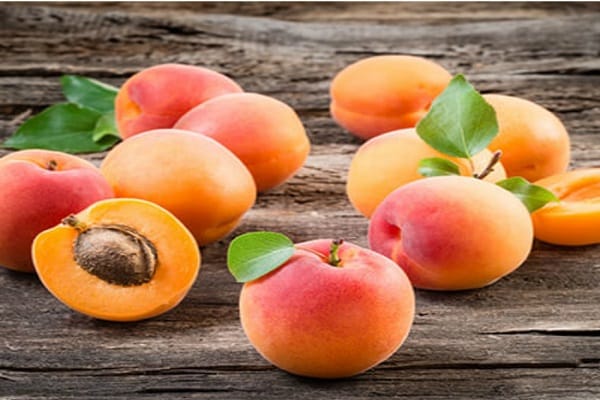

Reviews about the variety Son of the Red-cheeked
Sergey, Okhansk, Perm Territory
The variety is distinguished by high yields and ease of cultivation. Winter hardiness is high, but all the same I cover for the winter. I will say one thing about apricot, the taste is great.
Natalia, Orenburg
They have been raising the Son of the Red-cheeked one for a long time. No complaints. The trees tolerate both drought and severe winter frosts very well. The apricots are large and tasty. I collect 20-25 kg from one tree. delicious fruits.
Alexander, Penza
I chose Krasnoshcheky on the advice of a neighbor in the garden and did not go hungry. A productive and frost-resistant variety, except for a few frozen branches. Trees are developing rapidly, received the first harvest in the fourth year. The fruits are large and tasty. In some years I collect 30 kg from one tree. fruits.
Favorable growing areas
The best areas for the growth of this species of fruit trees and its congeners are the Northern part of the Southern zones, as well as the South-Western regions. The apricot took root and perfectly adapted to the regions of the North Caucasus, the Volga region, the Crimea, as well as to Ukraine, Belarus, and Latvia.
The variety of the described culture, due to its low exactingness, has become widespread in the territories of the Krasnodar Territory, in Rostov-on-Don and in many other parts of Russia.
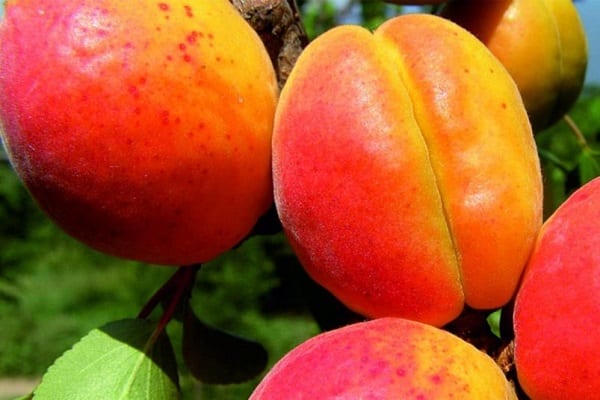

Calorie content of apricots and composition
Golden fruits contain organic acids, sugars (about 27%), acids, an unusually high amount of provitamin A (carotene), vitamins B1, B2 and C, a large amount of potassium, calcium and phosphorus. 100 g of fresh fruit has about 40 kcal, and in the same amount of dried fruit - 241 kcal.The concentration of mineral and ballast substances in the latter is almost 5 times higher, but there are less vitamins in them.
Macronutrients:
- water - 86 g;
- proteins - 1 g;
- carbohydrates (glucose) - 9 g.
Basic minerals:
- calcium - 28 mg;
- potassium - 305 mg;
- phosphorus - 26 mg;
- magnesium - 8 mg.
Essential vitamins:
- provitamin A - 16 mg;
- C - 10 mg.
Historical facts Apricot is cultivated in many warm places in Central and Eastern Europe. However, many scholars consider Northern China to be its historical homeland, from where in the 1st century BC. e. he was brought to Persia and Armenia. The Persians revered him as the seed of the Sun. During the conquests of Alexander the Great, he came to Greece, and later to the Roman Empire, from where it spread throughout the Mediterranean, and then throughout most of Europe. From the ancient Greek word prekokkia in the languages of the Romance group, the word albrioque was formed by adding additional syllables.
Planting and leaving
The variety of this culture is photophilous, therefore, the choice of a site for planting it should fall exclusively on areas well warmed up by the sun's rays. The distance from groundwater to the ground surface must be at least two and a half meters. The soil must be loose. On chernozems, loamy and sandy loam soils, this variety of apricot will grow and bear fruit better.
Important! This fruit culture does not accept acidic and peaty lands; it simply does not grow in such areas.
Plots for planting such trees should be located on heights protected from strong winds by some kind of fences. Upon reaching the age of four, the culture will get stronger, and the need to protect it from gusts of wind will disappear by itself.
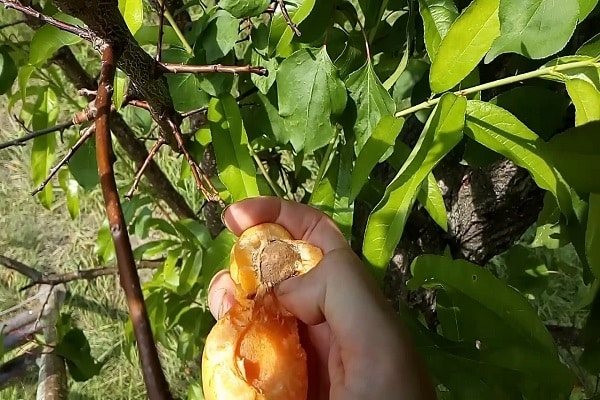

When planting apricot trees, the following rules must be observed:
- The planting of this crop should be done in mid-spring, in April, or in the autumn period in October.
- Planting apricots is not recommended during the growing season.
- A planting hole for a seedling, for timely shrinkage of the soil and facilitating the manipulations associated with planting, must be prepared ahead of time.
- In the autumn period, such a deepening is formed two weeks before planting; for planting a culture in the spring, the pit is harvested in the fall.
- The spacing of seedlings should be at least 3-5 meters apart. The same gap is allowed between apricot and other trees.
The staged period of planting seedlings includes:
- digging a hole 70/80 centimeters wide and deep;
- laying drainage with a layer of 10 centimeters;
- backfilling the pit with fertilizers mixed with the ground.
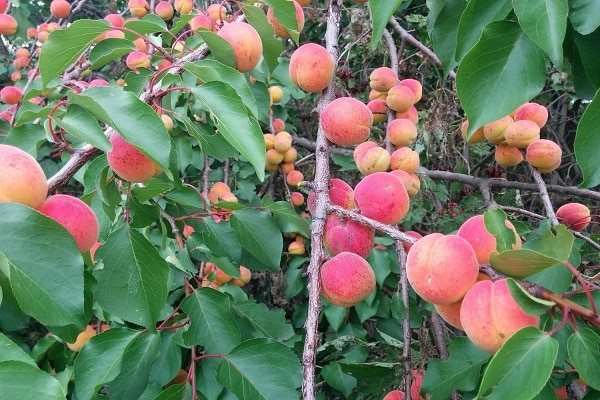

Important! Rhizomes of seedlings should not adhere to top dressing without soil, in order to avoid getting burned.
Further manipulations when planting an apricot include:
- filling the hole with a mixture and the formation of a certain elevation from it and the earth;
- planting a seedling on a tubercle, in an upright position, with a uniform distribution of its root system and further dusting of soil without filling the neck of the plant;
- soil compaction by tamping;
- watering and mulching the soil.
See also
Description of the Black Prince apricot variety and its characteristics, taste and agricultural technologyRead
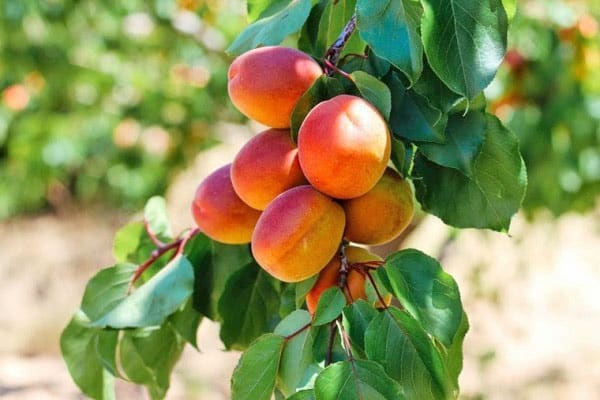

You can also grow an apricot crop from a stone. To do this, the planting material must be soaked in warm water for a day. And then place the bones in the pits having a depth of 6 centimeters, with a distance between each of up to 15 centimeters. Upon reaching the age of two, the plant can be transplanted into the ground.
Saplings of this variety of apricot trees are not particularly demanding to care for. Therefore, listening to the advice of experienced gardeners on how to properly take care of the plant, you can increase not only the growth and vital activity of the crop, but also increase its yield.
To exclude excessive soil moisture, it is necessary to mulch the soil layer under the plant with due regularity.As a result of such actions, the air circulation between the rhizomes will improve, and the excess liquid will evaporate.
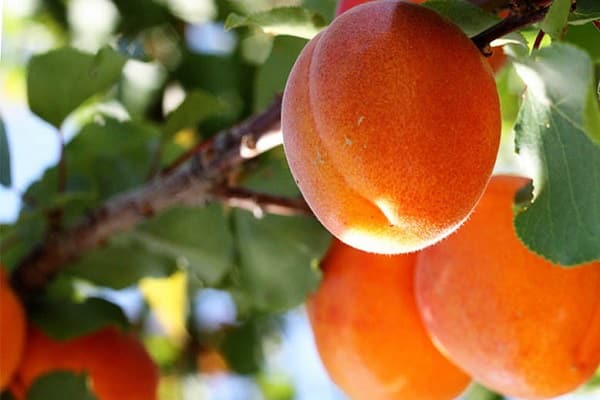

Irrigation is necessary at the time of the growth of the apricot crop. For the first time, watering is carried out during the flowering period, then - in the spring period of shoot formation and in the middle of summer. The required amount of water for each watering is 2-3 buckets of warm liquid. The last watering is carried out at the end of autumn, using 5-6 buckets of water.
In the first year of growth, the seedling needs pruning. The formed crown should be rejuvenated from time to time. Places where powerful branches were cut must be treated with a special disinfection method. Painful conditions of trees must be stopped by special manipulations using chemical mixtures or oil paint.
In the autumn period, the trunk of an apricot tree must also be processed, with the use of whitewashing and the addition of lime, copper sulfate.
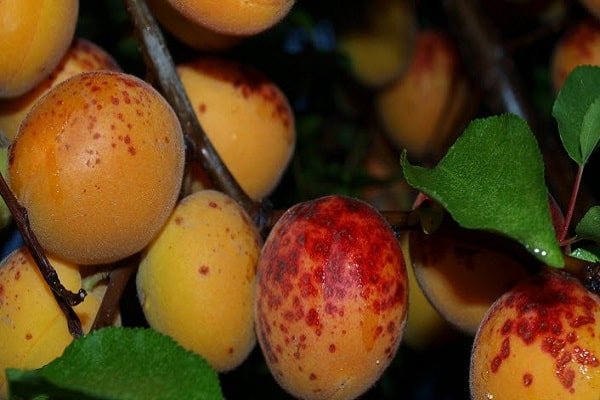

Proper planting and caring for fruit trees will provide the gardener with a rich harvest and a luxurious apricot garden in the future.
Disease and Pest Control Tips
Various diseases caused by fungal infections are much more difficult to treat than prevent. In addition, one tree is rarely affected, since spores are easily carried by the wind, infecting other stone fruits. Bordeaux liquid, "Horus", is quite effective against moniliosis. The tree is sprayed in autumn, after leaf fall, and in spring, before the beginning of the flowering period.
Preventive measures against the development of diseases and the appearance of pests are as follows:
- apply fertilizers on time - they not only help to get a bountiful harvest, but also strengthen the immune system, which, in turn, helps to resist diseases:
- take a close look at the tree in the fall - the sooner you find signs of disease or the presence of pests, the sooner you take measures to combat them and your chances of success will be noticeably higher;
- remove all dry branches, bark, diseased and deformed fruits around the plant;
- Do not forget whitewash - this measure not only helps to protect from the rays reflected by the snow, but also helps to protect against pests (the composition contains vitriol);
- at least twice a year, trim the crown.
We advise you to read more about diseases of apricot trees and their treatment.
As a preventive measure, in addition, the crown is sprayed in autumn and spring with a 7% urea solution or 1% boric acid solution.
If, nevertheless, preventive measures are not enough, the following drugs are used:
- "Zircon";
- "Speed";
- Fundazol;
- "Delor" and others.
Pests (tick, weevil, moth, etc.) pose a threat to the Red-faced. Insects are fought with:
- "Fufanon";
- Actellik.
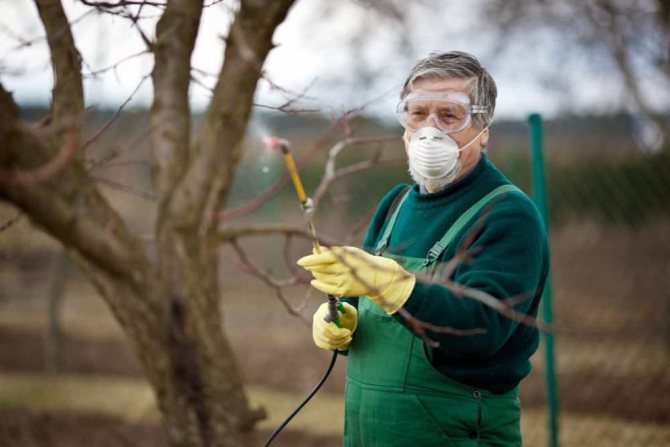

Winter hardiness
Apricot trees of this variety have winter hardiness below average. This is especially true for the cold regions of Central Russia, the Urals, with their inhospitable winters, low temperatures, constant precipitation and spring frosts. But, with some care, and here the apricot, in the form of a Red-cheeked miracle, grows and gives good yields.
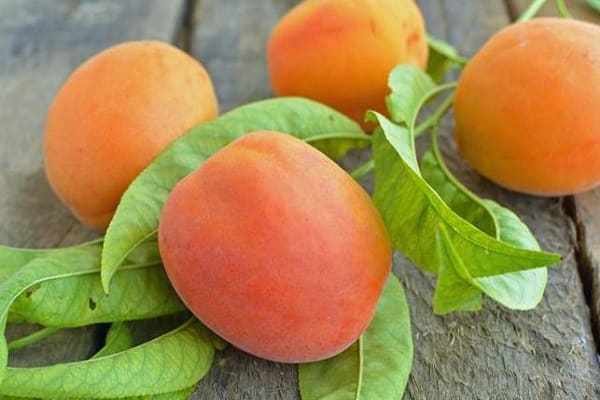

How to plant an apricot
Many gardeners are worried about when to plant an apricot, in spring or autumn? The choice of planting time depends on the climatic conditions of cultivation. So if in winter severe frosts in your region were not previously observed, then planting seedlings can be carried out in the fall.
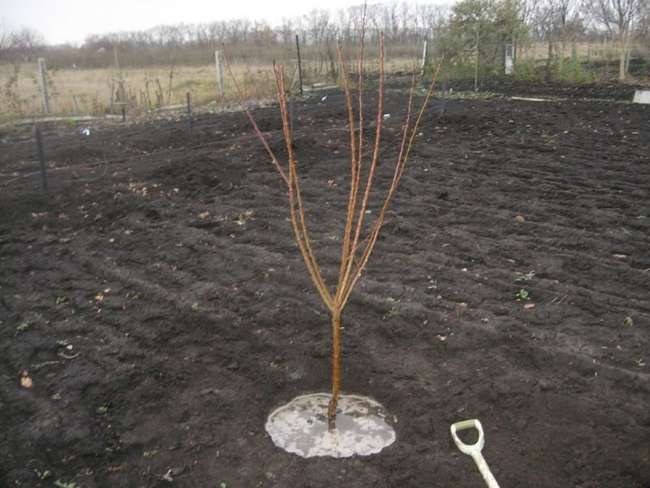

When grown in more severe conditions, it is advisable to plant seedlings in the spring, provided that the correct care of young trees is carried out in the first year.
Selection of quality seedlings
In order for a young tree to quickly take root and begin to develop intensively, it is necessary to choose the right quality planting material.First of all, remember that it is best to purchase apricot seedlings from nurseries or gardening stores. You can take a seedling from a familiar and reliable gardener. This is the only way to minimize the likelihood of purchasing a low-quality seedling or even another variety.
The seedling itself must be chosen one year old or a maximum of two years old. The aboveground part of the apricot tree should be at least 70 cm with a root collar diameter of 12-14 mm. It is very important that the entire surface of the seedling does not have mechanical damage or signs of diseases or pests. The root system should not be overdried with 4-5 large central roots and many small roots.
Seat selection
The choice of location largely influences the planting process of this variety. Red-cheeked grows and develops best in well-lit areas, well protected from gusty winds. As mentioned earlier, the cultivar can grow in poor soils. But in order to get the maximum possible yields, it is more expedient to select areas with such fertile soil as black soil. Pay attention to the groundwater table. Due to the rather powerful root system, it is desirable that the groundwater does not rise above 3 m from the soil surface.


When choosing a growing site, you need to take into account the degree of weed infestation. If there are more than 12 perennial weeds per 1 m2, such as spurge, thistle or wheatgrass, then such a place is not suitable for growing a seedling. Indeed, in the first few years, weeds can strongly oppress a young tree, taking on a significant amount of nutrients and moisture.
Landing technology
The whole process of planting a seedling of the Son Krasnoshchekiy variety can be divided into several stages.
- First of all, 2-3 weeks before planting, a planting pit is prepared with a width of 70-80 cm and a depth of 80-90 cm. In this case, the optimal planting scheme is 6 x 7 m. It is very important that the walls of the pit are vertical.
- Next, 12-14 kg are poured into the pit. rotted manure and 130-150 g of superphosphate.
- From above, 8-9 kg of fertile soil is poured and 20-30 liters are poured. water.
- The day before planting, the roots of the seedling are soaked in water at room temperature and cut by 1-2 cm. The tips of the roots.
- When planting, an apricot seedling is placed in the center of the pit and, spreading the roots, is covered with fertile soil. It is important that the root collar, after planting is completed, is 1-2 cm above the ground surface. How to independently determine the root collar of a seedling, we wrote here.
How to choose and save fruit
It is recommended to buy only ripe apricots with an intense, pleasant smell. If you lightly press on them with your finger, then a hole will remain. The fruits themselves must have the correct shape, without dents or deformations. The peel should be intact and the seed should be easy to separate from the fruit. The surface should not have dark putrefactive spots.
Unripe fruits are completely or partially green in color, sour in taste, very mealy and dry.
It is better not to store these fruits in the refrigerator, as they lose their flavor.
We recommend reading:
- Cherry plum - useful properties and contraindications, calorie content, composition. ...
- Pear - benefits and harms, composition, calorie content. Pear recipes. The best varieties
- Blueberries - description, useful and harmful properties, composition, calorie content, recipes
- Currant - description, useful and harmful properties, composition, calorie content, ...
- Blueberries - description, composition, calorie content, useful and harmful properties, ...
- Mulberry - description, useful properties and contraindications, composition, ...
Cooking use
In Europe, it is a very popular fruit that is consumed both raw and in the form of jams, sweets and dried fruits. The seeds, which have a bitter taste reminiscent of almonds, are used in the production of Amaretto liqueur and parzipan (confectionery mixture). However, due to the high content of hydrocyanic acid, their nuclei are considered toxic.
Fresh fruits are gently washed and dried. They are usually eaten by breaking them into halves and removing the bones. If you need to cut them into slices, you should take a sharp knife with a smooth blade, since the blunt one will crush the fruit, and the jagged one will tear the delicate rind.
Dried fruit tastes great and is a healthy snack available all year round.
In cooking, golden fruits are used in a variety of ways. In Austria, for example, apricots are used as a filling for traditional delicacies such as dumplings (German Marillenknödel) and Sachertorte cake.
Apricot recipes
Apricot jam (jam)
- 1 kg of apricots will be peeled and pitted. Cut into small pieces.
- Place the pulp in a saucepan along with 500 g of gelling sugar and a sachet of citric acid and bring to a boil.
- Boil for about 5 minutes, purée if necessary.
- In a skillet without oil, lightly fry 50 g of thinly sliced almonds.
- Add 4 tbsp. To the jam. l. Amaretto and almonds, mix well.
- Then pour the mass into special glass jars washed with hot water and roll up.
Tip: for long-term storage, it is necessary to fill the cans to the very edges so that a minimum of air gets in.
Apricot pie
- Wash 1 kg of apricot, dry, break into halves, remove seeds.
- Beat 200 g of butter with 200 g of sugar, 1 packet of vanilla sugar and a pinch of salt. Add 3 eggs and 125 ml of egg liqueur, one at a time. At the end, gently mix with flour, 1 sachet of vanilla pudding powder and baking powder.
- Put the dough in a detachable form, greased and sprinkled with bread crumbs. Stick the halves of the fruit into it and bake for an hour at 175 ° C. Determine the readiness with a wooden stick.
- When the apricot pie has cooled, sprinkle with powdered sugar and garnish with whipped cream.
Canned apricot compote
- Wash the apricots, dry a little, carefully divide into halves, remove the seeds. Fill clean 2 liter cans by about a third.
- Boil 3 liters of water, add 3 cups of sugar (600 g) and bring to a boil again. Pour the fruit over them. The required amount of syrup is easy to calculate after the first pour.
- Cover the jars and sterilize in a deep saucepan filled with hot water for 10 minutes. Then pull out, roll up, turn over. Wrap well and do not touch until cool.
Tip: for canning, the fruits must be slightly unripe, otherwise they will fall apart.

